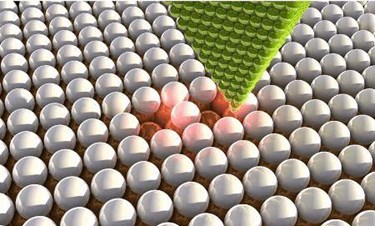
# Researchers Reveal Groundbreaking Advancements in Quantum Magnetism: Progressing Towards Kitaev Quantum Spin Liquids
A group of scientists has recently achieved a remarkable milestone in quantum physics through the discovery of a novel method for fabricating materials with intricate quantum magnetic characteristics. These substances challenge the behavior exhibited by standard magnets, representing the initial experimental progression towards realizing the long-speculated yet elusive *Kitaev quantum spin liquid* (QSL) state.
Published in *[Nature Communications](https://doi.org/10.1038/s41467-024-53900-3)* on November 15, 2024, this study illustrates how these newly developed materials may unlock sophisticated quantum traits, paving the way for potential breakthroughs in quantum computing, high-temperature superconductors, and beyond.
### **Transcending Conventional Magnets**
In regular magnets like those found in refrigerator doors, ferromagnetism arises from the orderly arrangement of electrons. These electrons spin in a synchronized manner, generating attractive or repulsive forces that are readily observable. Conventional magnets depend on this meticulously organized configuration of electron spins, resulting in fixed magnetic attributes.
In contrast, quantum spin liquids represent an intriguing—and fundamentally different—classification. Unlike ferromagnets, quantum spin liquids display *disordered* magnetic characteristics even at absolute zero temperature. Rather than a straightforward arrangement of electrons, their spins engage in a complex entanglement, operating in a manner that is not dictated by classical magnetic principles. The fundamental concept underlying these materials is quantum entanglement, a perplexing phenomenon wherein entangled particles remain connected regardless of the distance separating them.
Dr. Lucy Clark, the principal investigator of the study, emphasizes the importance of this breakthrough in capturing innovative quantum states. “This work is a crucial milestone in understanding how we can engineer new materials that permit us to explore quantum states of matter,” she stated. “It reveals a vast array of materials that remain largely unexplored, which could provide significant insights on how we can manipulate new magnetic characteristics for quantum applications.”
### **An Innovative Experimental Method**
The journey towards realizing quantum spin liquid states has encountered numerous hurdles. A primary challenge in developing these materials has been their crystal arrangement: densely packed structures typically compel magnetic ions into conventional, energetically stable formations, obstructing the material’s access to the sought-after quantum spin liquid state.
To surmount this barrier, Dr. Clark’s team adopted a groundbreaking technique, utilizing advanced equipment at the UK’s ISIS Neutron and Muon Source alongside the Diamond Light Source to create a material with an *open framework* crystal structure. This material incorporates *ruthenium*, a transition metal recognized for its exceptional capability to engage in magnetic interactions.
In this newly developed material, the ruthenium ions are adequately spaced to inhibit traditional magnetic ordering, allowing researchers to *tune* the magnetic interactions with greater ease. By carefully reducing the interactions between the magnetic ions, the scientists were capable of designing a system that progresses towards the preferred quantum spin liquid state while remaining experimentally viable.
Although these materials do not yet represent a perfect Kitaev system, the research signifies a substantial advancement. “It has established a valuable connection between theoretical frameworks in this domain and empirical experiments, and has opened up productive new avenues for investigation,” Dr. Clark noted.
### **The Importance of the Kitaev Quantum Spin Liquid**
The Kitaev quantum spin liquid—named after physicist Alexei Kitaev, who introduced the theory in 2006—signifies a state where quantum spins remain perpetually in motion, even as temperatures approach absolute zero. The pursuit of this phenomenon has been largely motivated by the compelling potential that it could facilitate fault-tolerant quantum computing.
In conventional quantum systems, decoherence—the degradation of quantum information due to external influences—remains one of the most significant challenges to developing scalable quantum computing architectures. However, in a Kitaev quantum spin liquid, the entangled spin states could theoretically maintain their integrity, resulting in stable qubits for quantum computation. These stable qubits could be manipulated in ways that mitigate many of the external factors currently hindering quantum technologies.
### **Future Prospects**
The recent developments reported by Dr. Clark’s team are merely the inception of a broader journey. As researchers strive to fine-tune and control these quantum spin liquid materials, the prospects for future applications could broaden considerably. These materials may also play a crucial role in investigating fundamental physics, contributing to the resolution of persistent questions regarding quantum chaos, and potentially unveiling new states of matter.
Nevertheless, the practical challenges are substantial. While this research signifies exciting progress, there is still much to discover before these materials can transition from laboratory settings into quantum devices. The science remains in its early stages, and further experimentation will be essential in mastering the synthesis of Kitaev materials at practical scales.
Nonetheless, this innovative ruthenium-based material, characterized by its adjustable quantum interactions and open framework, signifies a promising starting point in that endeavor—a journey